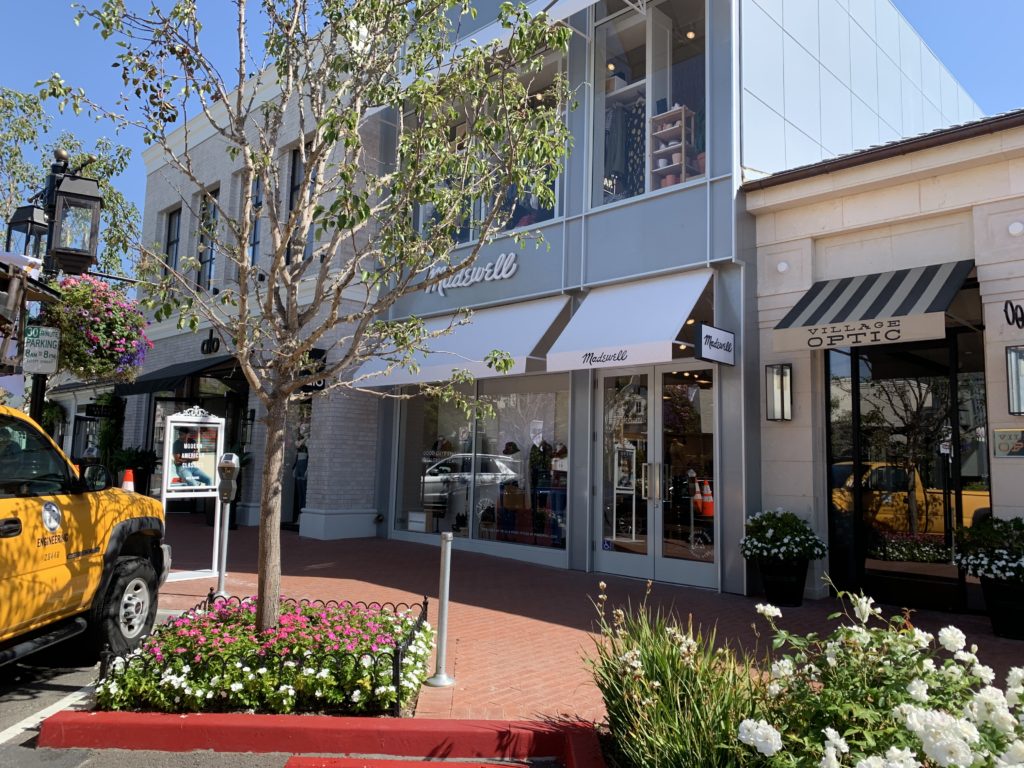
Land Use Consultant Howard Robinson said that developer Rick Caruso asked that a new section be inserted in the specific plan for his Palisades Village development.
Howard Robinson, who says he is “90 percent retired,” has worked as a land use consultant since the early 2000’s.
“I had just lost a job in the dot.com crisis,” he said, “and a friend said why don’t you become a consultant?” It became Robinson’s second career.
Robinson, who earned an MBA at Berkeley, has now relinquished his title as president of Gemstone Development and turned over his business, but admits if there’s a “juicy” case he will still take it.
He currently is the chairman of the Pacific Palisades Community Council’s Land Use Committee, a position he was appointed to by PPCC Chair George Wolfberg.
Robinson describes his consulting work – and the City’s — as “the balance between private rights and government regulations.”
He explained that one has to consider zoning regulations and building codes (City and State). “Add all these rules together and it’s a surprise that anything gets done,” said Robinson, who spoke about one client, and a seven-year process to get a building completed.
During the process of converting an aging building into a hotel at Wilshire and 7th Street in Santa Monica, the City decided the building should be declared historical – and the project dragged on as the developer had to deal with specifications that must be met under that status.
Santa Monica has also changed the parking for new buildings. If you put up an apartment building, the builder is not required to put in parking because “they [the City] are forcing people to go car-free,” Robinson said.
He noted that the Getty Foundation paid for Survey LA, which is now being published at HistoricPlacesLA. If your home happens to be in the comprehensive listing, the City could declare it an historic structure, making it hard to make changes or rebuild without special approval.
“I have a dozen clients on this list,” Robinson said.
He was asked if he knew that the Swarthmore Business District was on that list. On p. 25 of Survey LA, concerning the Brentwood Pacific Palisades Historic Districts, Planning Districts and Multi-Property Resources, researchers wrote in 2013: “Today the Swarthmore Avenue Commercial Historic District stands out from surrounding development as a highly cohesive collection of mid-century retail commercial development.” (Visit: http://www.preservation.lacity.org/files/Brentwood%20Pacific%20Palisades%20Districts.pdf).
Robinson said no to the question, but it provided a segue to Caruso’s Palisades Village Project.
“When Caruso acquired those properties, he proposed a new section be inserted into the specific plan,” Robinson said. “The specific plan trumps the zoning code.”
He noted that if Caruso had gone the regular route, there might have been lawsuits and more City conditions, causing a longer, riskier project.
“This is rare, and one example of how a smart person can work with the system,” Robinson said. “It was a brilliant move.”
He was asked if there were any public meetings about this — and how Caruso did it. “He went to the Citywide Planning Commission, who approved it,” Robinson said. “Then it went to the City Council, who approved it.”
There were notices about the hearings, Robinson said, but too many residents in the Palisades people were anxious to have the project. Also, notices about hearings were most likely posted downtown, not in the Palisades.
One Rotarian said, “I’ve heard many people say Caruso has not lived up to the land use agreement.”
Robinson said he had heard the same thing. For example, there was a promise that employees wouldn’t park on the streets, but they have been doing so.
The consultant, who has lived in Pacific Palisades for 25 years, said he didn’t know what the City conditions were because Caruso didn’t go through a normal conditional use plan.
He did “sign a private agreement with his neighbors,” said Robinson, who added that some of those neighbors felt Caruso has not kept his promise, but Robinson was told, “No one has the money or time to sue Caruso over the agreement.”
Robinson was on the PPCC Land Use Committee when it recommended the Caruso project to the Community Council and was asked why more questions were not raised in his committee over the alleyway, the right-hand lane of Sunset and the one-way street on Swarthmore that were “given” to Caruso.
“The City felt it was a good trade off,” Robinson said, “and most people wanted the project to go forward.”
He was queried about the McMansions that are going up in every Palisades neighborhood. “They block out the sunlight,” the Rotarian said. “I feel like I’m in the Bronx again.”
“The City has gone through two rounds of revisions to the building code regarding mansionization,” Robinson said, noting that many residents were not happy with the giant houses. “The first was about 15 years ago and then again about three years ago, which placed further exemptions. But some areas [in the Pacific Palisades] asked for exemptions, such as the Alphabet Streets.”
Robinson also raised the Highlands eldercare facility issue. “City regulations are objective. Does it meet the requirements? But that area is also in the Coastal Zone and the Coastal Commission considers more subjective issues.”
He acknowledged that “Some people in the Highlands didn’t feel like it [the Coastal Commission] answered subjective concerns.”
Next up for Robinson is a PPCC Land Use Committee meeting on October 17 that will look at the Calvary Church/School property expansion proposal.
